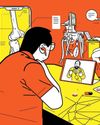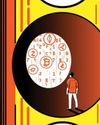
Hours after the Reserve Bank of India (RBI) lifted the moratorium on Yes Bank on March 19, the troubled lender’s newly appointed managing director and CEO Prashant Kumar decided to personally address customer concerns at the bank’s branches. What he saw at the Marine Drive branch in South Mumbai pleased him. “I was anxious that there would be a lot of customers. But there was no rush… I saw normal business and a few customers. It was comforting to learn that they were comfortable in dealing with the bank; there were no concerns and they had kept their deposits,” he tells Forbes India.
The interaction is hardly a metric to assess the bank’s health, but its newly structured board and Kumar will be breathing easy. After all, the moratorium was lifted two weeks ahead of its scheduled date of April 3 once a restructuring plan was approved. Banking operations have resumed as usual for its corporate and retail customers, and across its digital channels. Investor and depositor fears have been assuaged with the infusion of ₹10,000 crore additional capital into the bank, after a reconstruction plan was devised by the RBI and the government. Yes Bank’s common equity Tier1 (CET1), a key matrix, stands at 7.6 percent, against a worrisome 0.6 percent in December 2019.
Its newest investors are the State Bank of India—the largest public lender—housing finance firm HDFC and six private banks: ICICI Bank, Axis Bank, Kotak Mahindra Bank, Bandhan Bank, Federal Bank and IDFC First Bank.
During the lockdown on account of coronavirus, about 95 percent of Yes Bank’s 1,135 branches are operational and about 80 percent of its staff is working from home. Kumar and about 5,000 employees attend office.
この記事は Forbes India の May 8, 2020 版に掲載されています。
7 日間の Magzter GOLD 無料トライアルを開始して、何千もの厳選されたプレミアム ストーリー、9,000 以上の雑誌や新聞にアクセスしてください。
すでに購読者です ? サインイン
この記事は Forbes India の May 8, 2020 版に掲載されています。
7 日間の Magzter GOLD 無料トライアルを開始して、何千もの厳選されたプレミアム ストーリー、9,000 以上の雑誌や新聞にアクセスしてください。
すでに購読者です? サインイン

Home-Cooked Meal Is Now Greatly Valued
The pandemic has also brought with it an improved focus on hygiene, use of technology in dining, rise of cloud kitchens and resurgence in popularity of Indian ingredients

Paytm 3.0 - Reaching Near Breakeven In Two Years
As of 2020, Vijay Shekhar Sharma’s super app for financial services had run up losses in thousands of crores. Now, as digital payments gets yet another boost courtesy Covid-19, he’s hopeful of reaching near breakeven in two years

THE PANDEMIC HAS CAUSED WOMEN GREATER LABOUR PAIN
Covid-19 has shown that women are more likely to face the brunt of job losses than men, and find fewer opportunities when they want to resume. That apart, several have to deal with increased hours of unpaid work at home and even domestic abuse

LEADERSHIP WILL BE ABOUT SEEING THE BIGGER PICTURE
Leaders must not only guard their teams first during a crisis, but also deal with stakeholders with respect and dignity. And apart from pursuing business goals, they should remain committed to our planet and the environment

PHILANTHROPY SHOULD BE HUMBLE, BUT NOT MODEST
Apart from building a flexible and resilient framework for the future, philanthropists, civil society and the government must work in tandem so that every rupee is absorbed on the ground

INTEGRATED HEALTH CARE, TECH WILL DISRUPT SECTOR
While clinical research will get a boost, having a skilled workforce and public spending on health care will be challenges in the near term

DIGITALISATION WILL HELP IN VALUE CREATION
As the pandemic brings technology and innovation to the core of business and daily life, the next decade will see about 150 million digital-first families in India

Industry 4.0: Climate Revolution?
Augmenting sustainability alongside digital capabilities is an economic, competitive and global opportunity for India’s businesses, but regulations need to reflect intent

EV Dream Still Miles Away
Electric vehicles have remained a buzzword in India for years. But not much has moved on ground due to high upfront costs, range anxiety and charging infrastructure

Living Waters
A virus has caused us to scramble for oxygen but our chokehold on the environment is slowly strangling the very waters that breathe life into us. The virus is a timely reminder: We are merely consumers, not producers of life’s breath on this planet